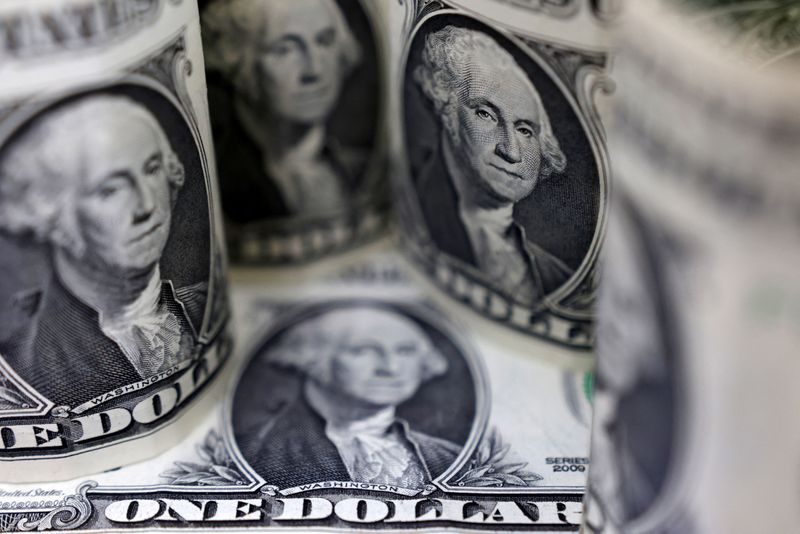By Stefano Rebaudo
(Reuters) -The dollar hit a fresh seven-month low on Tuesday with traders bracing for comments from Federal Reserve Chair Jerome Powell due on Friday, which could provide clues about the speed of the U.S. monetary easing cycle.
Meanwhile, Sweden’s crown fell after swinging up and down in morning trade as the central bank cut rates and said it could speed up policy easing if price pressures did not pick up.
It was last down 0.33% at 10.27 versus the U.S. dollar after hitting 10.33 earlier in the session a few minutes after the Riksbank announcement.
“None of this (Riksbank statement) is hugely surprising, but it’s still remarkable just how much the central bank’s stance has changed over these past few months,” said James Smith, economist at ING.
The euro last fetched $1.1078 on Tuesday having touched $1.1087, its highest since Dec. 28 in early trading.
The dollar index, which measures the U.S. currency against six rivals, was last at 101.82 after touching its lowest since Jan. 2 of 101.76 earlier in the European session.
The focus this week is Powell’s speech during an annual gathering of central bankers in Jackson Hole, but minutes of the Fed’s last meeting will also be in the spotlight.
Some analysts say the next few weeks will likely prove decisive on whether the Fed cuts by 50-75 bps this year or by 150 bps or more. The Jackson Hole conference is the first opportunity for the Fed to push back against the chance of a 50-bps cut at one of the year’s three remaining meetings, they add.
While labour market deterioration led to expectations for a quicker monetary easing, data since then has been mixed with upbeat retail sales.
Still, the U.S. economy remains “susceptible to a recession if there’s a financial shock”, said Thierry Wizman, global forex and rates strategist at Macquarie.
“But that financial shock may not be forthcoming,” he added. “In that case, we may stay at below-trend growth and look ‘peakish’, until the Fed has eased sufficiently.”
Markets are pricing in a total of 94 bps of Fed rate cuts this year.
A slim majority of economists polled by Reuters expect the Fed to ease by 25 bps at each of the remaining three meetings.
Expectations for the presidential elections’ outcome are also weighing on the greenback.
“As her (Kamal Harris) chances of winning some key swing states have improved, traders have abandoned a few of the (Donald) Trump trades, among which was a stronger dollar,” Macquarie’s Wizman argued.
Investors expected the greenback to rise in case of a Trump victory as tariffs would prop up the currency and higher fiscal spending would boost interest rates.
UEDA AWAITED
The Japanese yen was slightly weaker at 146.98 per dollar, still close to the near two-week high it touched in the previous session but grinding away from the seven-month high of 141.675 it touched at the start of August.
Bouts of intervention by Tokyo at the start of last month and a surprise rate hike have pulled the yen away from the 38-year lows of 161.96 it was stuck at in early July and wrong-footed investors who sharply cut their bets against the yen.
Investor attention will be on Bank of Japan Governor Kazuo Ueda when he appears in parliament on Friday. Ueda is expected to discuss the BOJ’s decision last month to raise rates and the focus will be on whether he sticks to his recent hawkish tone.
Analysts said the yen’s pace of appreciation will likely be more gradual as the data shows most speculative short positions have been cleared.
The latest weekly data to Aug. 13 showed leveraged funds – typically hedge funds and various types of money managers – flipped their long-standing short yen position and are now net long for the first time since March 2021.
Barclays recalled that monthly data showed retail investors halved their net short U.S. dollar/yen positions in July as the yen rallied amid a resurgence in BOJ rate hike expectations.

